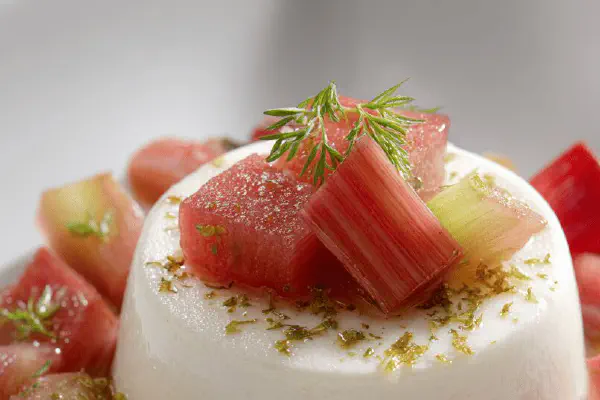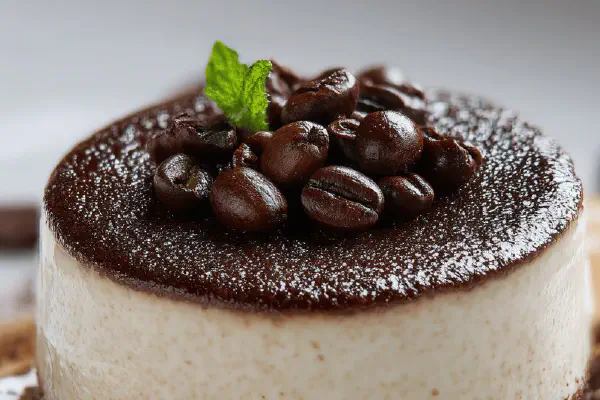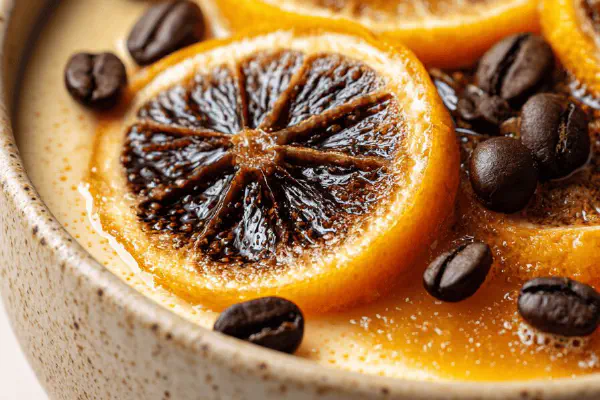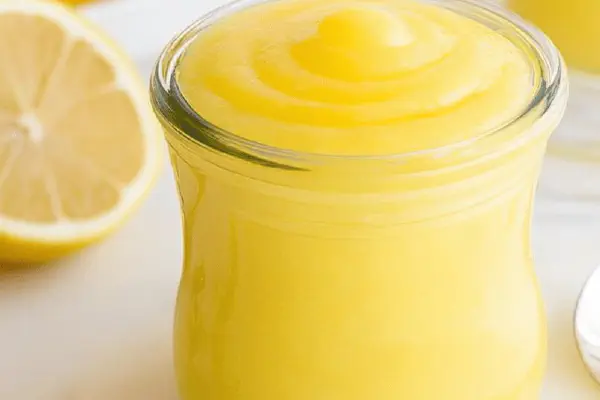Vanilla Orange Marble Marshmallow
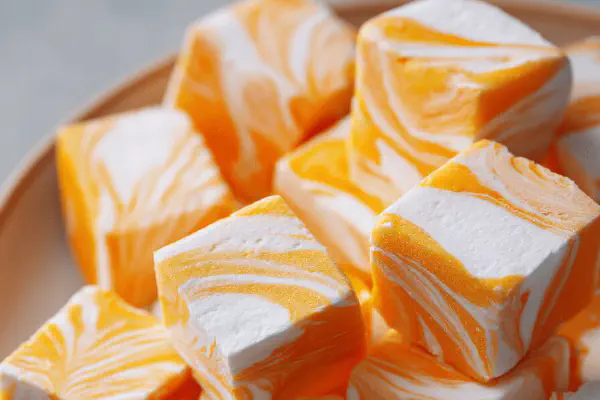
By Emma
Certified Culinary Professional
Ingredients
Orange syrup
- 16 ml (1 tbsp) gelatin powder
- 130 ml (1/2 cup plus 1 tbsp) concentrated frozen orange juice, thawed
- 65 ml (1/4 cup plus 1 tbsp) light corn syrup alternative such as agave syrup
- 0.5 ml (1/8 tsp) lemon yellow gel food coloring (optional)
Marshmallows
- 130 ml (1/2 cup plus 1 tbsp) water
- 1/2 vanilla bean split and scraped (or 1 tsp pure vanilla extract)
- 27 ml (about 5 1/2 tsp) gelatin powder
- 215 g (just under 1 cup) granulated sugar
- 130 ml (1/2 cup plus 1 tbsp) light corn syrup alternative like golden syrup
- vegetable oil for brushing
About the ingredients
Method
Orange syrup
- Scatter gelatin over orange juice in small saucepan; wait 7 minutes to bloom gelatin fully. Older gelatin means longer bloom.
- Add corn syrup substitute, warm medium heat, stir gently just until gelatin melts—do not boil; about 3 minutes. Remove off heat; stir in yellow gel color if desired. Keep warm and liquid, no setting yet. Set aside.
Marshmallow base
- Lightly oil an 20 cm (8 inch) square pan; line with plastic wrap, oil that surface too—prevents major sticking.
- Combine water and vanilla bean seeds plus pod in small saucepan. Sprinkle gelatin evenly over. Let swell 7 minutes; gelatin should look spongy, no dry patches.
- Add sugar. Heat medium, stirring often, until sugar and gelatin dissolve completely, roughly 6 minutes. Watch—if you see gritty sugar at bottom, keep heating and stirring gently. No rapid boil, steam rising signals ready.
- Remove vanilla pod before continuing. Pour mixture into stand mixer bowl. Add corn syrup substitute. Start whipping medium-high with whisk attachment right away.
- Beat roughly 8-11 minutes until softly peaked clouds form that hold shape but still float down slowly when tilted. Too stiff means grainy end texture.
- Reserved orange syrup—take 60 ml (1/4 cup) and fold into marshmallow gently with spatula, aim for marbled swirls rather than full mixing. Bright streaks visible.
- Pour one-third of marshmallow into prepared pan, smooth quickly to edges.
- Drizzle one-third of remaining orange syrup over marshmallow layer in thin streams; swirl gently with skewer or toothpick to create patterns, but don't overblend or colors will vanish.
- Alternate pouring layers of marshmallow and orange syrup two more times until used up—work swiftly, syrup risks gelling if cool too long.
- Cover surface and refrigerate at least 2 hours, ideally 2.5 to 3, until set but not rock hard—springy and slightly tacky to touch.
- Remove from pan using plastic wrap. Dust work surface with fine powdered sugar or cornstarch blend to prevent sticking.
- With a knife brushed lightly with oil, slice into 25 squares about 4 cm (1.5 inch) each. Oil prevents chewing gum effect and uneven tearing.
- Store marshmallows airtight separated by parchment to avoid sticking.
Cooking tips
Chef's notes
- 💡 Bloom gelatin separately in juice and water. Timing matters—older gelatin needs longer swell. Watch texture like sponge, no dry spots allowed. Hot heat softens gelatin paste; too hot burns sugars. Use gentle warmth. Let syrup hang liquid but not set before folding. Cold syrup clogs layers. Timing layers fast; syrup gels quicker than marshmallow. Work near stove, keep warm if needed.
- 💡 Whip marshmallow mix to soft peaks. Overbeating causes grainy chew, under whipped leads to runny mess. Look for cloudlike, gentle folds that hold but collapse slowly when tilted. Texture is tactile. Vanilla bean better than extract, seeds add aroma bits. Pod removal essential to stop bitter skins and lumps. Sugar dissolve by sight; no crystals means ready to whip. Patience on this step saves texture.
- 💡 Coloring happens off heat, fold in gently after syrup melts. Lemon yellow gel needed if adding vibrance. Avoid boiling with color, breakdown dulls pigment. When folding orange syrup into marshmallow, fold slowly, gentle swirl creates visual streaks. Overmix and colors blend into single shade, losing marbled effect. Use a skewer for patterns, fine lines. Oiled pan and plastic wrap prevent nightmare sticking. Oil knife before cutting; sticky marshmallow gums up blade.
- 💡 Substitutions: corn syrup replaced by agave or golden syrup but watch consistency—thinner syrups need longer warm stirring to get sticky shine. Vanilla extract speeds prep but dulls aroma and changes chew softness. Gelatin adjustment small but crucial—to 27 ml for sturdier set yet chewable. Bloom longer if kitchen cold or gelatin looks dry. At chilling, room temp pan helps layers bind well. If mix feels too stiff, add small water drops for softness balance.
- 💡 Cut marshmallow at room temperature after chill but not hard set—springy and slightly tacky feel. Dust surface with powdered sugar and cornstarch mix to stop sticky edges. Slicing clean squares prevents tearing strings. Store airtight with paper layer between pieces; humidity ruins texture fast. After 2-3 hours chilling, don’t leave longer or marshmallows toughen. Knife-oil measures underrated but necessary for clean edges.
Common questions
How to tell when gelatin is fully bloomed?
Look for squishy, spongy texture—no dry patches on powder surface. Timing varies with gelatin age. Older gelatin might need extra 7-10 minutes. Avoid lumps or clumps; these turn into grainy bits later—patience here is key, not rushed.
Can I substitute corn syrup with honey?
Honey changes stickiness and flavor. Use golden syrup or agave instead. Honey's thicker, crystallizes faster. Heat gently, watch syrup stage carefully. Mix longer for consistency. Might alter final chew but gives interesting aroma. Adjust sweetness last moment if needed.
Why do marshmallows get grainy sometimes?
Likely from sugar crystals not dissolving fully or overwhipping. Heat sugar mix slowly until clear and smooth; no gritty sound or texture at bottom. Avoid rapid boil that burns. Whip to soft but stable peaks; too stiff traps air unevenly. Lumps also form if gelatin isn’t well dispersed or pod seeds left in.
How best to store marble marshmallows?
Airtight container necessary to keep moisture out. Layer pieces with parchment or powdered sugar/cornstarch dust mix to avoid sticking. Room temp is fine up to 1 week if dry climate. Refrigeration can cause lumps or hardening—only if ambient humidity high. Freeze not recommended, texture breaks down badly.
